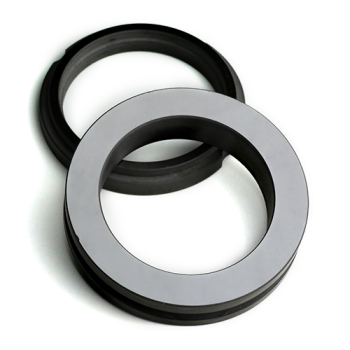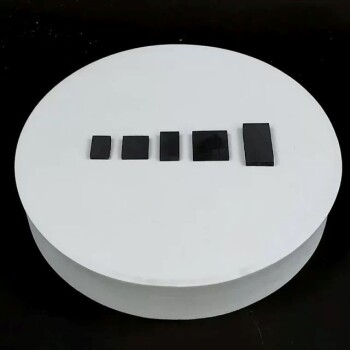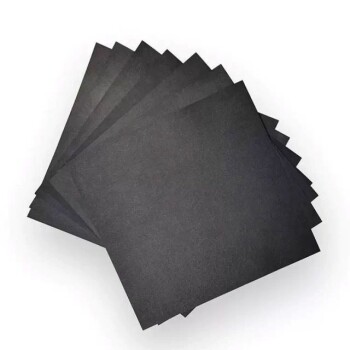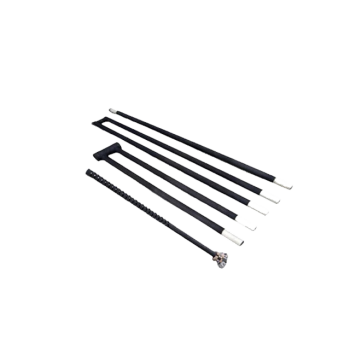In short, the primary benefits of Diamond-Like Carbon (DLC) coatings are a unique combination of extreme hardness, exceptionally low friction, and high chemical resistance. These properties allow DLC to dramatically improve the durability, efficiency, and lifespan of components by creating a surface that behaves like diamond without the cost or brittleness of a solid diamond part.
Diamond-Like Carbon isn't a single material but a class of advanced coatings. The core challenge they solve is surface failure. By applying a microscopic layer of DLC, you can impart the valuable properties of diamond—like wear resistance and lubricity—onto a more conventional and cost-effective base material.

Deconstructing the Core Benefits of DLC
To understand the value of DLC, we must look beyond a simple list of features and analyze how its fundamental properties solve critical engineering problems.
Extreme Hardness and Wear Resistance
DLC coatings are exceptionally hard, often registering between 2000 and 9000 on the Vickers hardness scale (HV). For comparison, hardened steel is typically in the 600-900 HV range.
This extreme hardness directly translates into superior abrasive wear resistance. The coating acts as a robust shield, protecting the underlying substrate from scratching, galling, and gradual material loss.
Unparalleled Low Friction
One of the most significant advantages of DLC is its extremely low coefficient of friction, often compared to that of Teflon but with far greater durability.
This property, known as high lubricity, means that surfaces slide against each other with minimal resistance. This reduces the energy required to operate moving parts and, critically, minimizes the generation of heat from friction, which is a primary cause of wear and component failure.
Superior Corrosion and Chemical Resistance
DLC is an amorphous, chemically inert material. It lacks the grain boundaries found in crystalline metals, which are common starting points for corrosion.
This structure makes it a highly effective barrier coating. It seals the substrate from exposure to moisture, acids, alkalis, and other corrosive agents, preventing rust and chemical attack.
Biocompatibility and Medical Safety
Many forms of DLC are biocompatible, meaning they do not provoke an adverse reaction when introduced to the human body. The material is non-toxic and stable.
This property has made it a critical material for medical implants, such as orthopedic joints and cardiovascular stents, as well as surgical tools. It prevents metal ion leaching into the body and provides a durable, low-friction surface for articulating components.
Not All DLC is Created Equal: Understanding the Variations
The term "DLC" refers to a family of coatings whose properties can be tailored for specific applications. The internal structure, determined by the ratio of diamond-like (sp³) to graphite-like (sp²) carbon bonds and the presence of other elements, is key.
The Role of Hydrogen (a-C:H)
Many common DLC coatings are hydrogenated amorphous carbon (a-C:H). The presence of hydrogen helps to create a stable amorphous structure and can result in extremely low friction coefficients, especially in controlled environments.
The "True" Diamond-Like Structure (ta-C)
Tetrahedral amorphous carbon (ta-C) contains no hydrogen and has the highest concentration of sp³ (diamond) bonds. This makes it the hardest and densest form of DLC, offering the absolute best performance for applications demanding maximum wear resistance, such as high-performance cutting tools.
Doped and Hybrid Coatings
DLC can also be "doped" with other elements like silicon (Si), tungsten (W), or chromium (Cr). This is done to enhance specific properties, such as improving performance in high-humidity environments, increasing thermal stability, or improving adhesion to certain substrates.
Understanding the Practical Trade-offs
While powerful, DLC is not a universal solution. An objective assessment requires understanding its limitations.
Temperature Limitations
A key weakness of most DLC coatings is their thermal stability. Performance can begin to degrade at temperatures above 350°C (660°F) as the internal structure converts to a softer, graphitic form. This makes it unsuitable for certain high-temperature applications.
The Critical Role of Substrate Adhesion
The performance of any coating is entirely dependent on its ability to adhere to the component. The surface preparation of the part and the deposition process are absolutely critical. Poor adhesion will lead to flaking and premature failure, regardless of the coating's inherent quality.
Coating Thickness and Internal Stress
DLC coatings are very thin, typically between 1 and 5 micrometers. They also have high internal compressive stress. While this stress contributes to hardness, it also limits the practical thickness that can be applied before the coating becomes unstable and prone to delamination.
Application Complexity and Cost
Applying DLC requires sophisticated vacuum deposition equipment (PVD or PACVD). This is a line-of-sight process that is more complex and costly than conventional plating or wet-film coating methods, making it best suited for high-value components where performance justifies the investment.
How to Choose the Right DLC for Your Application
Selecting the correct coating is about matching its specific properties to your primary engineering goal.
- If your primary focus is maximizing wear resistance for cutting tools: You need the hardest coating available, making non-hydrogenated ta-C the ideal choice.
- If your primary focus is reducing friction in automotive engine parts: A hydrogenated a-C:H or a metal-doped DLC offers an excellent balance of extreme lubricity and durability.
- If your primary focus is ensuring safety for medical implants: A pure, biocompatible form of DLC is required to prevent adverse biological reactions while providing a long-lasting, low-wear surface.
- If your primary focus is a premium aesthetic and scratch-resistant finish (e.g., watches): A standard, well-applied a-C:H coating provides the desired deep black appearance and excellent protection against daily wear.
Ultimately, Diamond-Like Carbon is a premier surface engineering tool that provides a powerful solution when you understand both its profound benefits and its operational limits.
Summary Table:
| Key Benefit | Core Property | Ideal Application |
|---|---|---|
| Extreme Wear Resistance | High Hardness (2000-9000 HV) | Cutting Tools, Industrial Parts |
| Superior Lubricity | Low Coefficient of Friction | Automotive Engine Components |
| Chemical & Corrosion Resistance | Amorphous, Inert Structure | Medical Implants, Harsh Environments |
| Biocompatibility | Non-toxic, Stable Material | Surgical Tools, Orthopedic Implants |
Ready to enhance your component performance with advanced DLC coatings? KINTEK specializes in precision lab equipment and advanced coating solutions for industries requiring superior surface engineering. Our expertise in DLC coatings can help you achieve longer component life, reduced friction, and improved efficiency. Contact our experts today to discuss how we can tailor a DLC solution for your specific application needs.
Visual Guide
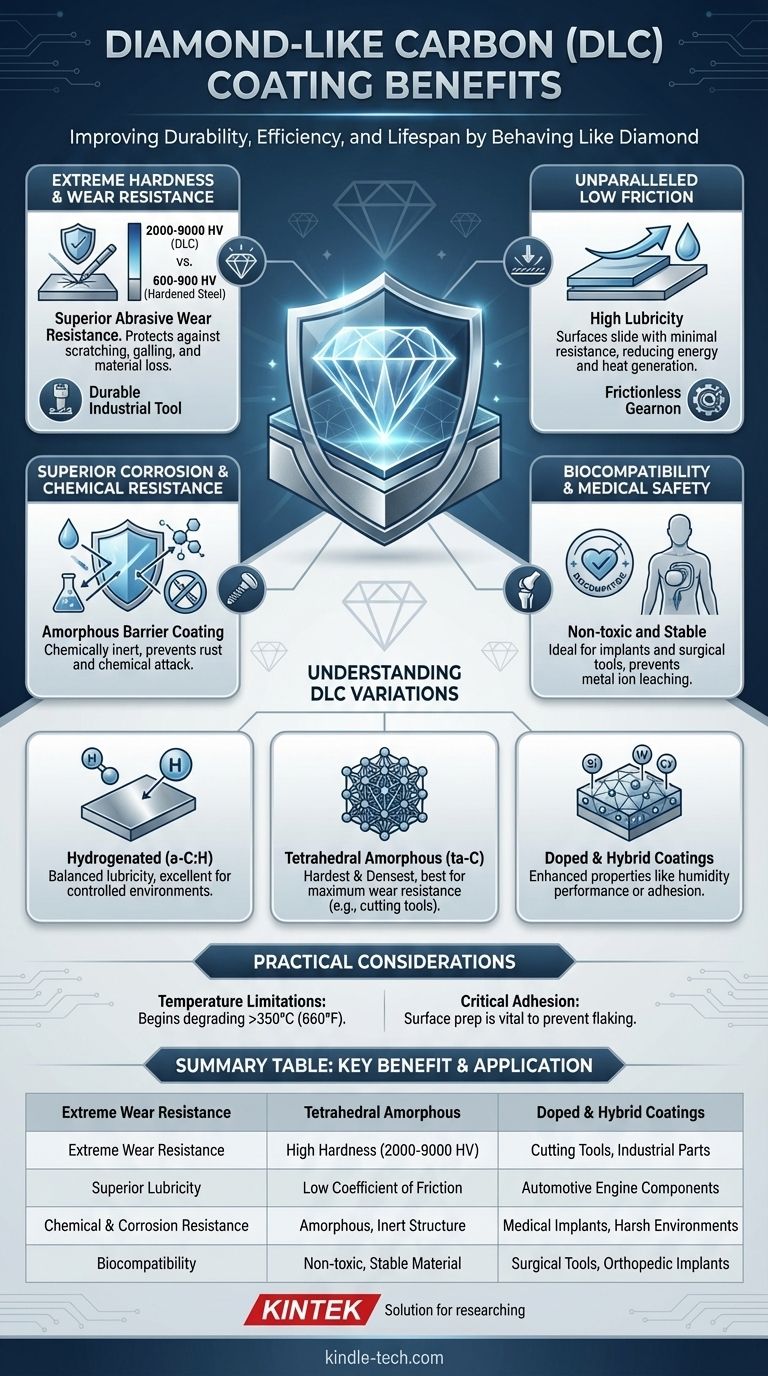
Related Products
- Custom CVD Diamond Coating for Lab Applications
- Glassy Carbon Sheet RVC for Electrochemical Experiments
- Hydrophilic Carbon Paper TGPH060 for Battery Lab Applications
- Silicon Carbide SiC Thermal Heating Elements for Electric Furnace
People Also Ask
- Is diamond coating permanent? The Truth About Its Long-Lasting Durability
- What are diamond films used for? Enhancing Tools, Electronics, and Implants with Diamond Surfaces
- How thick is CVD diamond coating? Balancing Durability and Stress for Optimal Performance
- How do you calculate coating coverage? A Practical Guide to Accurate Material Estimation
- What is the application of diamond coating? Solve Complex Wear, Heat, and Corrosion Problems
